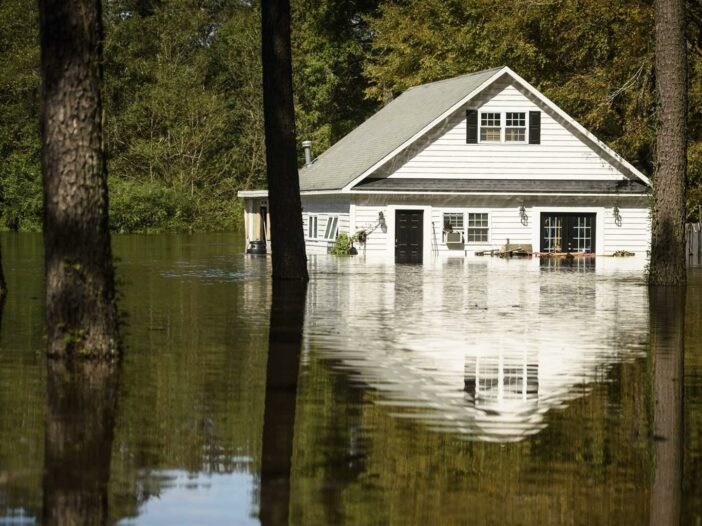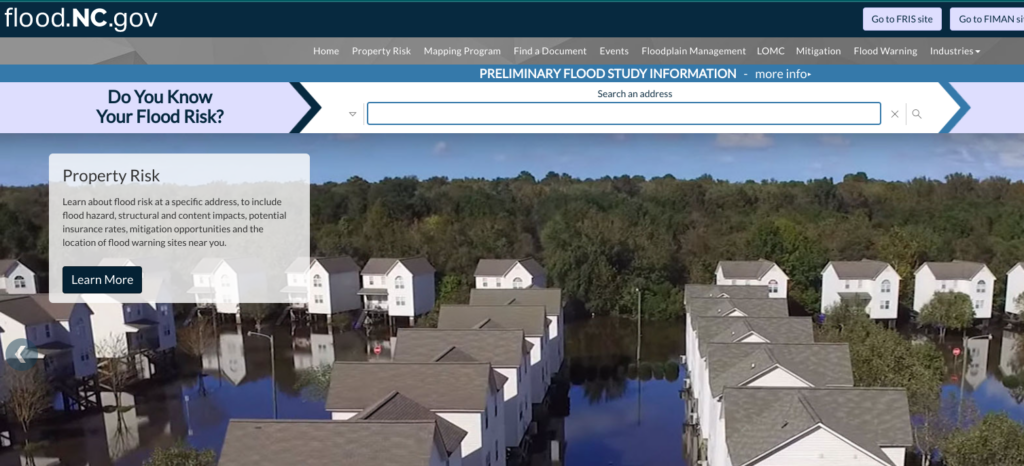
I’ll be the first to admit, my typical approach to flood insurance has been, “what does my insurance agent recommend or does the carrier require for this property?”. When I found out the North Carolina Department of Insurance was planning to host a four-hour virtual conference on the topic, that counts toward four hours of my annual continuing education requirements here in North Carolina, I thought this would be a great opportunity to learn more. (Bonus: This access was provided free to attending adjusters and agents!)
For those who know me personally, early mornings are not my brightest time to shine, but since I could take Chiquita an abbreviated version of our regularly scheduled morning walk and jump on this 8:30 a.m. event from the comfort of my home office, I’m here to live document my learnings today as we go… yes, before 9 a.m. 😜
The program has opened with sharing news and social media coverage of past floods in our state, and beyond, to remind us of how real the threat of flood damage is to our property.
Some Surprising Stats on NC Floods and Coverage That I Learned About Today
Did you know that the Piedmont region is the home to the most common recurring flooding, not the Coastal Plain?

According to NC State, 84.5% of flood losses were outside high-risk zones from December 2006 to May 2020.
99% of the U.S. population has lived in a county that has experienced a flood disaster… you cannot simply “move to an area without flood risk”.
96% of homeowners do not have coverage for floods; only 25% of property owners have flood insurance in areas with MANDATORY coverage requirements; 97% of properties in North Carolina do not have flood insurance.
What qualifies as a flood?
“A flood is a general and temporary condition where two or more acres of normally dry land or two or more properties are inundated by water or mudflow.”
“Collapse or subsidence of land along the shore of a lake or similar body of water as a result of erosion or undermining caused by waves or currents of water exceeding expected cyclical levels.”
Let’s Talk About the Coast
- Coastal flooding is the most expensive (FEMA paid losses–over $40B)
- Hurricanes are less frequent than river flooding
- Challenges for coverage: no additional living expense or loss of use coverage is provided
Do You Know Your Flood Risk?
Flood.NC.gov provides an easy-to-access online search tool:
That search tool provides more information by property address as to the data available via current flood models to help you evaluate your property interest.
Flood Inundation Mapping & Alert Network (FIMAN) also allows you to view current and forecasted flood conditions: https://fiman.nc.gov/ (Pro Tip: You can also sign up for alerts based on flood level at monitored gauges near you, like creeks and rivers. I just signed up for Moderate and Major Flooding alerts for Bogue Sound at Beaufort, near my own Carteret County property.)
Flood Map Limitations
A recent study by The Nature Conservancy and Arizona State University found that the flooding from Hurricanes Matthew in 2016 and Florence in 2018 impacted a footprint 23% greater than the 100-year floodplain and well beyond what flood hazard maps had predicted.
Property Management: Who Needs Coverage?
Always remember that owners need coverage for their property, and tenants need their own coverage for their contents.
Disclosure Requirements for Sellers
A member of legal counsel for the North Carolina Real Estate Commission noted in the event chat board that there are already questions on the current disclosure related to flooding and several additional questions on the new disclosure form required for use on and after July 1, 2024.
An owner is not required to disclose any of the material facts that have a “No Representation” option, even if they have knowledge of them. However, failure to disclose latent (hidden) defects may result in civil liability. The disclosures made in this Disclosure Statement are those of the owner(s), not the owner’s broker.
Homeowners can request rep loss data FEMA claims data by phone at 1-877-336-2627 or via email at FEMA-FMIX@fema.dhs.gov. This is helpful to have available during transactions!
Own a Coastal Home? Apply for a Grant to Strengthen Your Roof!
North Carolina Insurance Underwriting Association (NCIUA) is one of the first organizations in the nation to begin offering grants to help eligible policyholders in coastal communities better protect their homes against the threat of hurricanes. Through the Strengthen Your Coastal Roof program, eligible policyholders can apply for a grant up to $6,000 to go toward the installation of a FORTIFIED Roof.
The Strengthen Your Coastal Roof program covers areas above the Intracoastal Waterway. These counties include Beaufort, Brunswick, Camden, Carteret, Chowan, Craven, Currituck, Dare, Hyde, Jones, New Hanover, Onslow, Pamlico, Pasquotank, Pender, Perquimans, Tyrrell, and Washington.
Enter your NCIUA policy number and mailing zip code to see if you might be eligible for this program at https://StrengthenYourCoastalRoof.com/. (I didn’t know about this and have already started inquiring for my Carteret County home!)
Got Questions?
I’d love to share more of the resources I became familiar with today. Don’t hesitate to reach out so we can talk shop! 919-229-9725 or Lisa@InvestinHerRealEstate.com.

